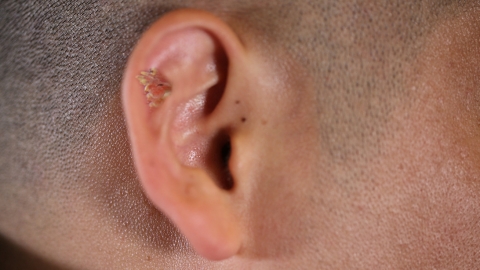How are filiform warts transmitted?
Generally, as benign skin growths caused by human papillomavirus (HPV) infection, the transmission routes of filiform warts mainly include direct skin contact, indirect contact with contaminated objects, self-inoculation and spread, mother-to-child transmission, and iatrogenic transmission. The specific analysis is as follows:

1. Direct skin contact: Healthy individuals coming into direct contact with HPV carriers, especially contact with the affected skin areas of the warts, may allow the virus to spread through minor skin injuries of both parties and subsequently colonize and multiply on the skin surface of the healthy individual, causing infection.
2. Indirect contact with contaminated objects: HPV can adhere to the surfaces of objects used by infected patients, such as towels, clothing, combs, basins, and razors. Healthy individuals may become infected when touching these virus-contaminated objects, especially if their skin has existing injuries that allow the virus to enter the body.
3. Self-inoculation and spread: Patients already infected with filiform warts may spread the virus to other areas of their own body if they frequently scratch the warts and then touch other healthy skin areas, especially those with skin injuries. The virus can transfer and colonize in these new locations, leading to the spread and worsening of warts.
4. Mother-to-child transmission: If a pregnant woman is infected with human papillomavirus and has filiform warts, the fetus may come into contact with virus-carrying maternal skin or secretions during delivery through the birth canal. The virus may enter the newborn's body through minor skin injuries, causing infection.
5. Iatrogenic transmission: During medical procedures, if medical instruments are not thoroughly disinfected and sterilized, residual HPV may remain. When these instruments are used on healthy individuals, the virus may enter the body through skin wounds caused by the medical procedure, leading to infection.
In daily life, it is important to maintain skin cleanliness, avoid sharing personal items with others, and reduce skin injuries to lower the risk of filiform wart transmission.




